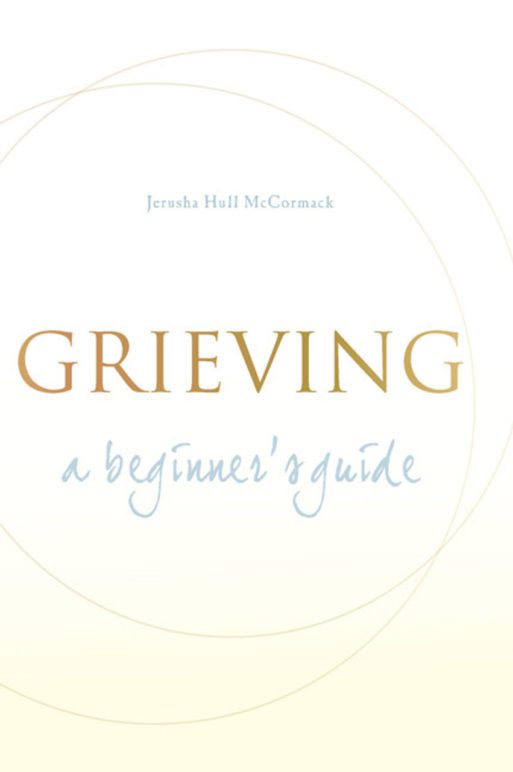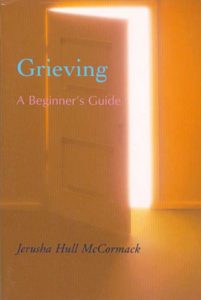 “Grieving: A Beginner’s Guide,” by Jerusha Hull McCormack is a short book about the nature of grief and the intricacies of the grieving process. It is exactly what the title suggests: a guide for the first-time griever.
“Grieving: A Beginner’s Guide,” by Jerusha Hull McCormack is a short book about the nature of grief and the intricacies of the grieving process. It is exactly what the title suggests: a guide for the first-time griever.
McCormack describes the book as a “series of signposts” to guide grievers on the path to a new life. She speaks directly to the reader, imparting wisdom gained following her own experience with grief after the unexpected death of her husband. Her narrative is an intimate look through the window of profound grief. She explains that there are no rules or prescriptions to help deal with the pain. Instead, she shares with the reader the ways in which others have tried to make sense of the turmoil, fear and sadness following the death of someone they love.
 McCormack uses many descriptors to explain the intangible process of grieving. Grief is (among many other things) complicated, unpredictable and debilitating, she writes. It can bring about personal growth, but also cause physical and mental pain. And grief is exhausting. There is no “script” to the grief “play,” and you can’t let others dictate what you “should” be feeling.
McCormack uses many descriptors to explain the intangible process of grieving. Grief is (among many other things) complicated, unpredictable and debilitating, she writes. It can bring about personal growth, but also cause physical and mental pain. And grief is exhausting. There is no “script” to the grief “play,” and you can’t let others dictate what you “should” be feeling.
McCormack found that “grieving, expressed openly and honestly, can be one of the most liberating experiences of life.” She believes that going through grief offers a rare opportunity for personal growth, a way to recreate one’s own life in the wake of profound loss.
“Grieving: A Beginner’s Guide” offers beacons of hope to the newly bereaved. McCormack lets the reader know they are not alone, however lonesome they may feel during this most personal of experiences. Nor does she try to diminish the intensity of the situation. Indeed, she describes how horrible it can be. Reading the words of others who’ve gone through a similar experience can help. But they cannot cure our grief.
There are many recurring themes throughout “Grieving: A Beginner’s Guide.” For instance, McCormack makes use of the idea that “your old life died with the person you loved,” reiterating that there is no way to fully recover from immense grief. Recovery implies you can return to a previous state. However, you can never go back to the way things were before your loved one’s death. It’s impossible to be the same person you once were. The grief will always be with you in one form or another.
The initial realization of this truism is certainly unsettling. But it is necessary to begin a new life following the death of a loved one.
McCormack suggests ways to rethink grief. Throughout the book she offers both “dead-end” ways of dealing with grief and “reorientations” related to the specific topic she’s discussing. Dead-ends are ways of thinking and behaving that are common but not actually beneficial. Reorientations are suggestions McCormack believes may help the reader cope with their grief. However, everyone is different, and what may have worked for her may not work for others.
Social Issues
Throughout “Grieving: A Beginner’s Guide” McCormack takes issue with the way our culture generally deals with those who are grieving. For example, she dislikes our use of the word “loss” when describing the death of a loved one, for loss indicates a kind of failure. She writes:
 In modern society, when you say you have lost something (or someone), you are implicitly violating a sacred principle of the contemporary Western world: The one who has the most stuff wins.
In modern society, when you say you have lost something (or someone), you are implicitly violating a sacred principle of the contemporary Western world: The one who has the most stuff wins.
We in the West are a society based on accumulation of things. To lose a valuable thing is to lose status. A person you love is a most valuable thing. You have lost it. You are therefore diminished.
She is making the point that saying you’ve “lost” a loved one subliminally indicates that you’ve failed in some way. When you say you lose something, it also implies that you can replace it. Of course, this is impossible with a loved one. You can marry again, or have another child, but they will never replace the person who has died. So the feeling of guilt many people experience during the grieving process is perpetuated by our cultural norms.
She does not suggest ridding our use of the word “loss” entirely, however. We can lose many things following the death of a loved one. She has a problem with the subliminal implications of using the term to describe someone who is grieving.
For instance, one thing a griever can lose is their self-esteem. Society’s overarching attitude about people in grief can initiate this secondary kind of loss. McCormack writes, “Modern society does not wish to acknowledge loss, nor is it well prepared to deal with those who are in pain.” This idea follows from our society’s obsession with happiness and well-being: being sad or in pain is bad, so we must avoid those feelings whenever possible.
A person who is grieving brings death and sadness directly to the minds of everyone around them. This makes many people very uncomfortable. As McCormack says, modern Western society is largely focused on happiness, progress and success. Goal-oriented endeavors for a grieving person can be impossible given their emotional state. This can, in turn, cause grieving people to feel ashamed of the way they feel. When people are unhappy, they’ve failed to achieve the happiness which is so vital in our society.
Grief A Necessarily Cliché Topic
Grief is a topic countless authors have broached before. (In fact, there are many poems about death and grief strewn throughout the book.) In this sense, much of “Grieving: A Beginner’s Guide” seems rather cliché. Many of the typical platitudes associated with grief pop-up throughout the text: “…grieving is a universal experience – but it is also uniquely personal.” “Everything in your world has been turned upside down.” “Death defies the imagination.”
 Though these ideas have been recycled many times before, for a griever, in the moment, they may be very soothing.
Though these ideas have been recycled many times before, for a griever, in the moment, they may be very soothing.
Much of “Grieving: A Beginner’s Guide” also seems repetitive. I felt as if I read many of the same ideas numerous times, arranged in various anecdotes, dressed in different verbs and adjectives. But though it seemed that way to me, it’s possible that the book would be tremendously helpful for someone who is currently dealing with grief.
Many of the passages were quite moving. Much of the advice McCormack gives could be beneficial for anyone in need of a pick-me-up or who wants to change an aspect of their life.
Since McCormack went through the profound grief following the death of her husband, her words have a great deal of credibility. She does not try to preach as a counselor or therapist, just as someone who’s experienced the tumult of grief. I think “Grieving: A Beginner’s Guide” would benefit anyone who is grieving, regardless of where they are in the process.

 “Grieving: A Beginner’s Guide,” by Jerusha Hull McCormack
“Grieving: A Beginner’s Guide,” by Jerusha Hull McCormack


 John Mulaney’s “Funeral Planning” on Netflix: No Real Plan
John Mulaney’s “Funeral Planning” on Netflix: No Real Plan

 Composting Bodies Is Now Legal in a Dozen States
Composting Bodies Is Now Legal in a Dozen States














